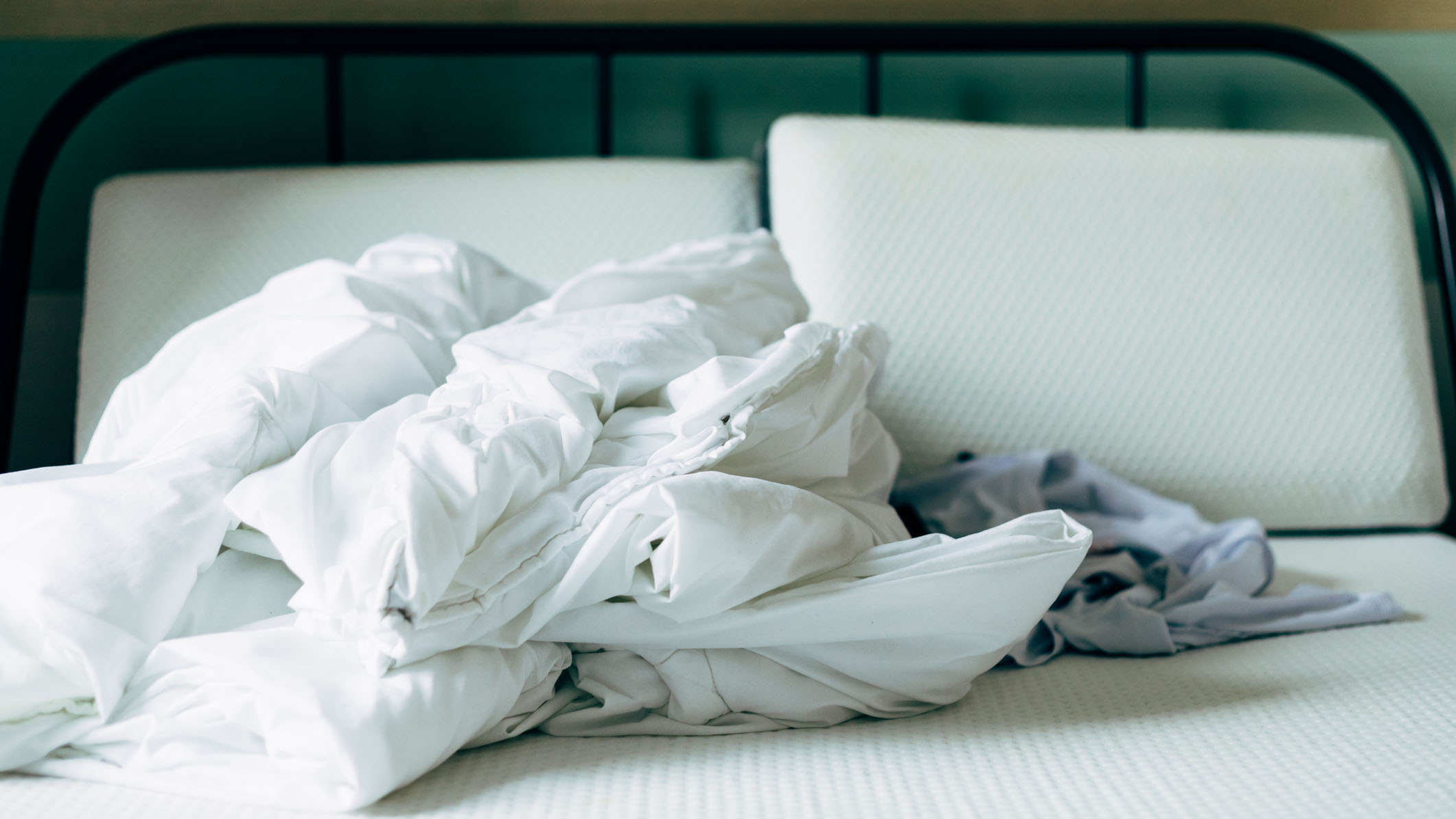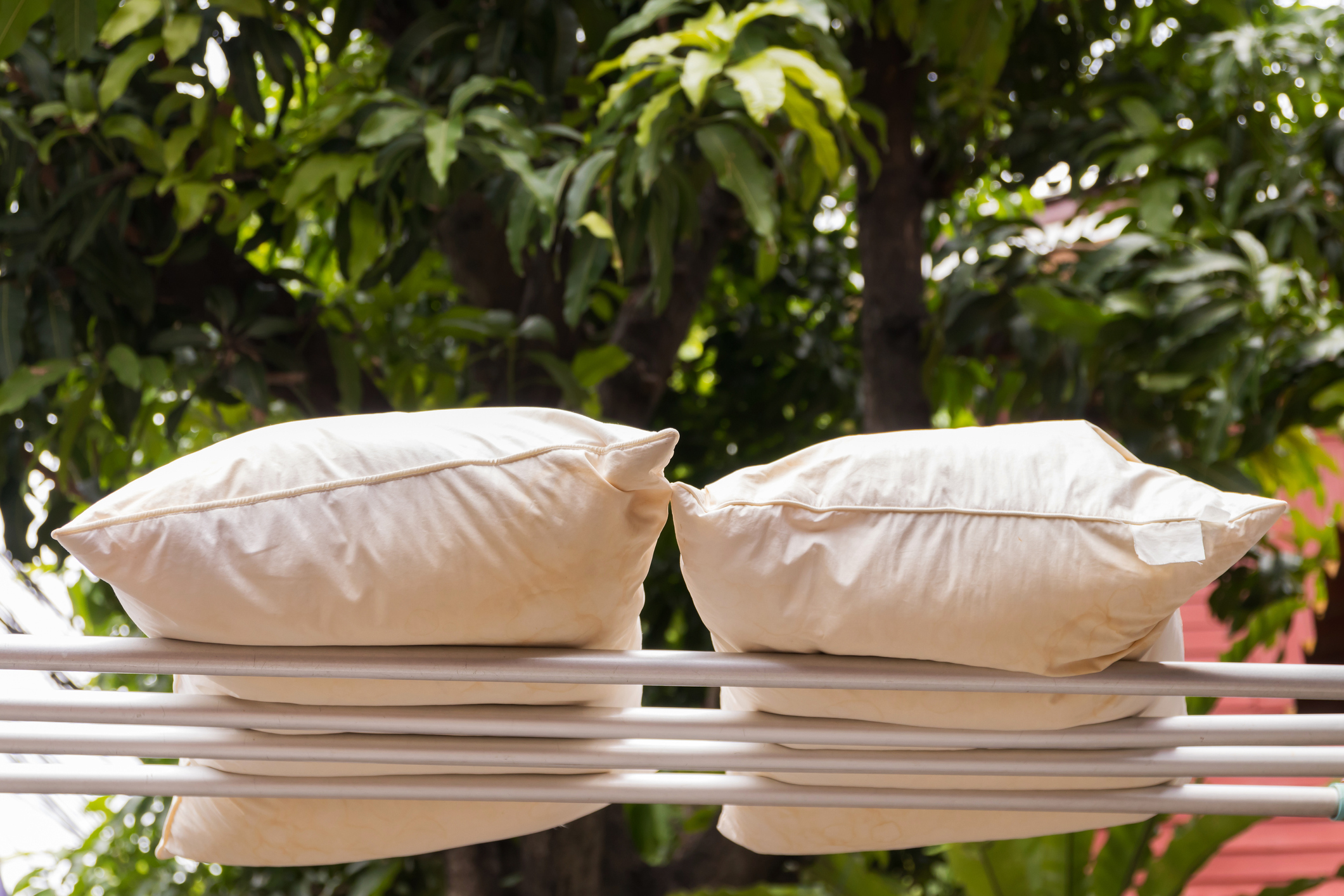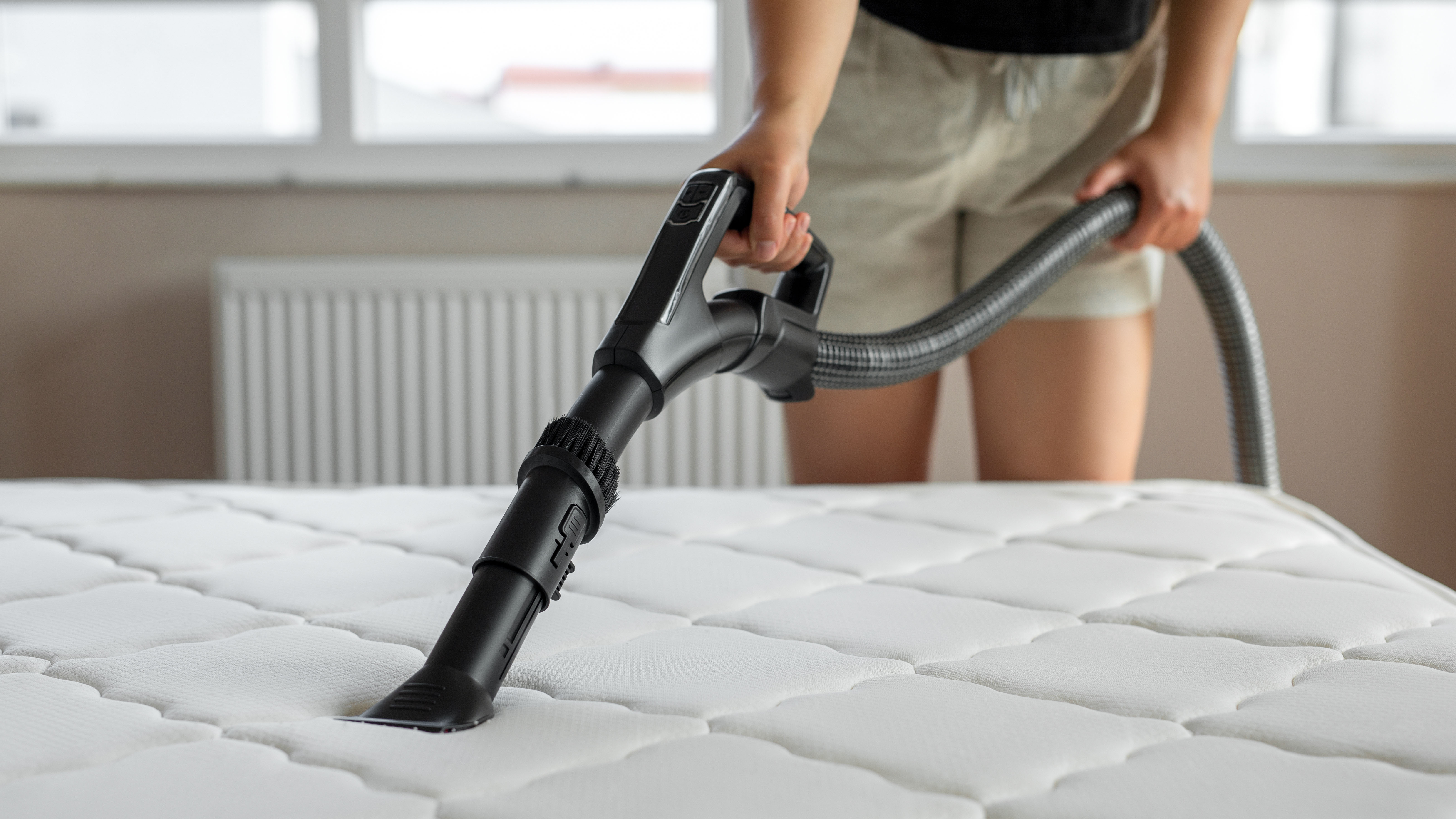How to get rid of dust mites from your mattress, pillows and bedding
Dust mites don’t bite, but they do aggravate allergies — here’s how to remove them from your bed

Dust mites are usually the last thing on our mind when looking for ways to improve our sleep. However, they’re a bigger threat to a goodnight's rest than you might have imagined.
Even the best mattresses with the latest in hypoallergenic properties aren’t entirely immune to the irksome presence of dust mites. Unlike bed bugs, which feed on blood, dust mites survive on a diet of our dead skin and pet dander. They thrive in dark, dusty soft furnishings, like mattresses, pillows, comforters and bedding — which is why you might be wondering how to get rid of them.
Without regular cleaning, dust mites are free to feed and breed, resulting in even more of the microscopic pests. Here, we’ll walk you through how to remove dust mites from your mattress, pillows and bedding so you can enjoy a restorative and uninterrupted sleep. Let’s get started.
What are dust mites and why are they a problem for your sleep?
Dust mites are microscopic pests that lurk in the dusty corners of our homes, including deep within our mattresses and bedding. Dust mites don’t bite, but they can aggravate allergies — which can wreak havoc on our sleep quality.
Research shows that dust mites can cause respiratory allergies, resulting in symptoms such as congested nasal passages, wheezing, a dry and scratchy throat, watery eyes, sneezing or coughing. Hypoallergenic mattresses, bedding and pillows are an effective barrier against the ill-effects of dust mites, but an efficient cleaning schedule should be your first line of defence.
How to get rid of dust mites from your bed
Step 1. Strip your bed
Strip your bed, removing any pillows, comforters and other removable soft furnishings. Wash your bed sheets on a hot wash of 130 F (54.4 C) to kill dust mites and remove allergens, while also taking any care labels into consideration (you’ll need to wash any delicate fabrics on as hot a wash as you are able).
Once the cycle has finished, allow your bedding to air dry outside, preferably in direct sunshine. The sun’s UV rays will kill any lingering dust mites, allergens or bacteria. Washing your bed sheets weekly will help keep dust mite numbers down.
- I'm a mattress expert — the No 1 mistake people make after buying a bed in a box
- Expert shares gross reason why you should never sleep on new bed sheets without washing them first
Step 2. Deep clean your dirty pillows
The oil and sweat from our skin and hair, plus dead shed skin from our face and scalp, makes a pillow a popular feeding and breeding ground for dust mites. While pillow protectors are a great way to help keep your pillows fresher for longer, only a zippered pillow encasement can keep dust mites out entirely. Keep dust mite populations down by giving your pillows a thorough clean.

Begin by placing your pillows in a clean bathtub of lukewarm water. Then add a capful of your normal laundry detergent and ½ a cup of white vinegar. Using a wooden spoon, agitate the water and ensure that the pillows are submerged. Leave the pillows to soak for approximately 4-6 hours, returning to occasionally stir and agitate the water.
Rinse the pillows in clean water, squeezing gently until the water runs clear. Once clean, place the pillows between two towels and push down gently — this will squeeze out any excess water without ruining their shape. To finish, place your pillow outside to dry, preferably in the sun as the sun’s UV rays will kill any lingering dust mites, allergens and bacteria.
Sign up to get the BEST of Tom's Guide direct to your inbox.
Get instant access to breaking news, the hottest reviews, great deals and helpful tips.
@mrsclarkescleaning ♬ Blinding Lights (Tabata) - Tabata Songs
If you have a memory foam pillow, saturating your pillow or exposing it to extreme heat will damage it so you will need to clean it slightly differently. Start by thoroughly vacuuming your pillow, paying close attention to any creases or seams.
Then, with a spray bottle, lightly apply a solution of one part vinegar and one part water, and add a small amount of laundry detergent. Remember, too much water can damage your memory foam pillow so take care not to saturate it. Allow the solution to soak for 20 minutes, then blot clean with a clean cloth and fresh water. Leave outside to air dry outside in direct sunlight.
Step 3. Clean your comforter
Similarly to your pillows, your comforter can quickly become a dust-mite breeding ground — especially if your pet sleeps on your bed, as dust mites thrive on pet dander. You can reduce the number of dust mites dwelling in your duvet by giving it a thorough clean. Laundering it in the washing machine is the easiest way to do this but if your comforter is too large or requires an extra deep clean, you can use your bathtub.

Place your comforter in a clean bathtub full of lukewarm water, then add a capful of laundry detergent and ½ cup of white vinegar. Then, using a wooden spoon or a gloved hand, poke the comforter down, ensuring that it’s completely submerged and that the water and detergent is working its way through the filling.
Leave to soak for around 4-6 hours. Rinse in clean water until the comforter runs clear and then gently squeeze out any excess water. Again, place outside to air dry, ideally in direct sunlight.
Step 4. Vacuum your mattress
While your pillows and comforter are soaking or drying, it’s time to turn your attention to your mattress. Mattresses are a popular hiding spot for dust mites, as they can burrow deep within the bed’s internal layers where they remain out of our reach. Of course, investing in a decent hypoallergenic mattress protector will offer some protection against dust mites, while a fully zippered mattress encasement will keep them out entirely.

Although we can’t clean inside the mattress, there’s plenty we can do to clean the outside of it and keep dust mite numbers down. Once all the bedding is removed, thoroughly vacuum your mattress, including any seams, creases and the back and the underside of the mattress. You could also thoroughly vacuum and dust your headboard and any bedside tables. Dust mites can't survive without dust, so the aim here is to remove as much dust from on and around your bed as possible.
Step 5. Spot clean your mattress
Regardless of whether your mattress is a hybrid or a memory foam, all our mattresses can benefit from an occasional spring clean. Fill a clean spray bottle with one part vinegar and one part water, and add a small amount of laundry detergent. Spray on to any stains and leave to soak for 20 minutes. Like memory foam pillows, memory foam mattresses can become damaged if saturated, so apply solution sparingly.
For stubborn mattress stains, then add a sprinkle of baking soda and leave for up to 12 hour. Vacuum up the baking soda, blot with a clean cloth and then allow to dry in direct sunlight.
Step 6. Wash around the bed, including soft toys

As well as our bedding, dust mites thrive in all soft furnishings - including carpets, curtains and any soft toys in children's bedrooms. Thoroughly vacuum any soft furnishings - especially under and behind the bed - and, if possible, wash any soft toys or additional pillows kept on the bed and allow them to dry in direct sunlight.
Step 7. Repeat as necessary
Dust mites are found in four out of five American homes, so they are incredibly common. However, keeping your bedroom clean and clutter free will help keep dust mites numbers down and prevent them from disrupting both your health and your sleep.
Wash your bed sheets weekly, and stay on top of the signs that dust mites are living in your mattress. Additionally, regularly following the above steps will help prevent a build up of dust mites within your pillows and comforters, while investing in a zippered mattress encasement will keep dust mites firmly locked out of your mattress.

Nicola is the Sleep Editor at Tom’s Guide, where she helps steer the mattress and sleep content published on Tom’s Guide, including our Best Mattress for Back Pain buying guide. With a career in journalism spanning the best part of two decades, Nicola brings experience to the team and the knowledge of what makes a great article, whether that’s a how-to mattress cleaning feature, a deep dive into melatonin gummies, or an in-depth mattress review. As a sleep editor, few better understand how important a decent mattress is to the overall quality of our sleep, and precisely how our sleep impacts our physical and mental health. As well as tackling the vast topic of sleep, Nicola joins the raft of expert mattress specialists at Tom’s Guide, who test and compare a wide range of mattresses in order to guide readers towards the very best options on the market.
